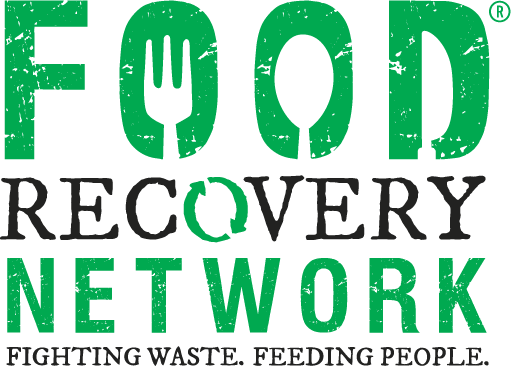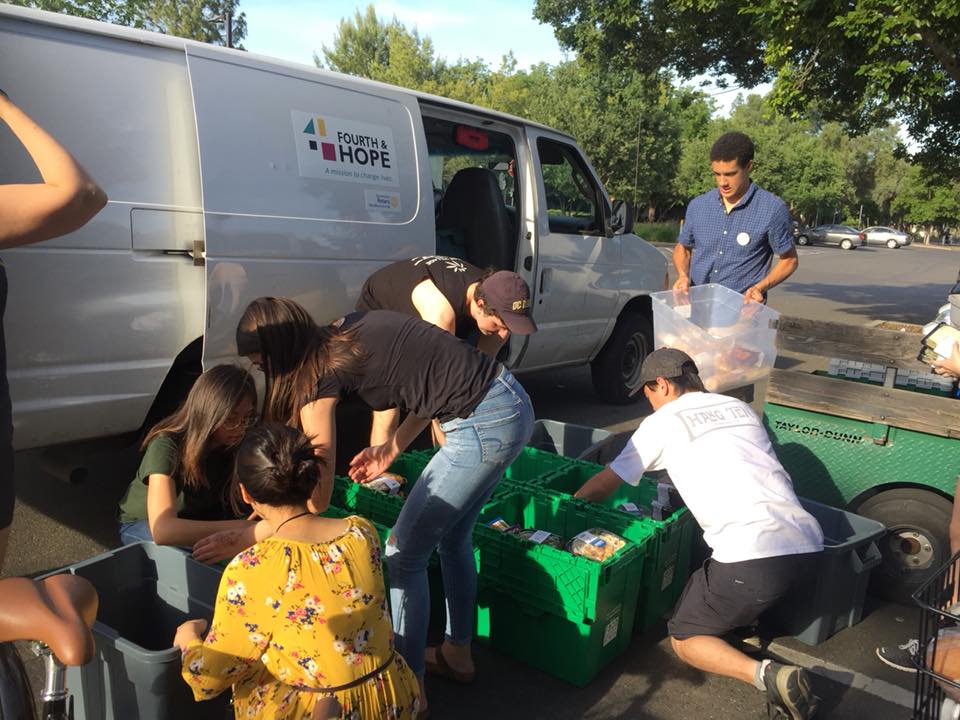This past semester, I had the wonderful opportunity to work with some incredibly driven and talented people at Food Recovery Network’s headquarters in College Park, MD. This experience was made possible by American University’s community service learning program. Through this program, I was able to receive academic credit in exchange for committing time to help a local organization that works with communities across the country. The goal of this program was to anchor what I was learning at an academic level in school to the issues people face in our communities. I focused my search on food insecurity and food waste prevention organizations. In a happy coincidence, a friend of my professor recommended Food Recovery Network (FRN). Once I reviewed their mission statement and saw the great work they were doing, I knew working for them would fit perfectly with my goals. So, I sent an email asking to have the opportunity to work with them and was quickly put in touch with Hannah Cather the Program Manager, or hc as she is known.
Together, she and I began to map out how I could help her team in their mission to promote food recovery and fight food waste. Very quickly, I learned that my expectations of what working in a non-profit office would be like weren’t accurate. Instead of negotiating with large food firms and lobbying for food reform, FRN focuses on ensuring that each individual chapter or chapter in progress (CHIP) is flourishing in their unique communities. My first job was to look over a slideshow presentation they had developed to explain FRN’s mission and their successes. Seeing the staggering amounts of food that had been collected, 3.8 million pounds in total, and the amount of meals that had been secured, 3.1 million, was quite impressive. It felt empowering to know that the work I was about to do would help ensure that food would go to hungry folks and not be left to rot in landfills.
After this assignment, I began to develop infographics for chapters who were struggling to convince their school’s dining provider to work with them. By partnering with these groups, CHIPs and chapters access the largest amount of food on campus and are able to increase their impact on campus food waste. Additionally, I worked on creating infographics which sought to convince students with particular interests, like environmentalism and social justice, to look into FRN and join a local chapter or possibly to start one themselves.
The work wasn’t always fun, especially on days where much of my time was eaten up fixing formatting errors; my commute was an hour and a half there and back and was tiring. At times, I felt unsure if the work I was doing really helped forward the cause. But, whenever I felt off or frustrated about what I was doing, the same thought would return to me. I would pause to reflect on how the work I was doing went directly towards helping people. I would remember how it felt to be working with a group of kind and dedicated people on an issue that they all cared about deeply. The energy I saw from the Program Team as they supported others was motivating and therapeutic. I looked forward to going to work and experiencing that energy.
So far, my education at American University’s International Studies program has involved absorbing as much information as possible about the nature of the world’s issues and their scope. Studying genocides, the effects of climate change, and reading testimonies from victims of war, has, at times, caused me to feel a pit of existential despair grow within me. These past semesters, I have talked with some of my professors about how they manage to cope with this feeling, and none have ever given me an answer that felt complete. By far the most rewarding thing about working with Food Recovery Network is the lesson that the solution to these feelings is to narrow in on one issue and do what you can to end it. When I read about the projections for the climate if drastic measures aren’t taken to remedy the damage we’ve done, I ease my dread by saying to myself, “While this issue is daunting and you don’t have the power to fix it, you are trying to help reduce our food waste, which fights emissions, and bring food to the hungry.”
Having an anchor to ground one’s self is a truly invaluable tool, especially today where all the world's calamities are a few clicks or swipes away. An anchor isn’t just liking pages on social media. It requires tangible effort and targets a specific issue. Volunteering to feed the homeless, actively opposing bigoted policies through protest or organizing, and speaking up when the rights of your coworkers, friends, or even strangers are threatened, are all forms of direct action that push society towards a better future. The students in all the CHIPs and chapters of FRN know this, and through working at their organization, I have gained this knowledge too. And with it, I know that the despair that once weighed me down can not withstand the healing energy of direct and purposeful action. So thank you FRN, and keep up the good fight!




















